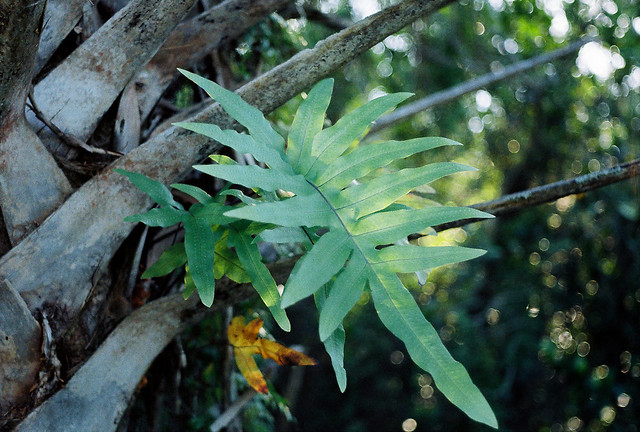The blue star fern care guide has long been one of the most popular on Houseplant Central. One question that keeps popping up about this plant is how to pot it. What kind of soil does it need? And what type of planter works best?
Although Phlebodium aureum is an epiphyte that needs a special soil type, it often comes planted in more standard potting soils. If you’d like your brand new fern to live a long and happy life, be sure to keep reading to find out what it needs to stay happy!
Choosing a pot for your blue star fern
As with most houseplants, it’s very important you don’t plant your Phlebodium aureum in a pot without a drainage hole. Excess water needs to be able to drain, or the plant might end up with root rot down the road.
There are several ways to go about this. You can choose a decorative pot with a drainage hole and place a saucer underneath it. Alternatively, you can plant the fern in a plastic nursery pot and place that inside a decorative overpot, which doesn’t need a drainage hole. When it’s watering time you can just take out the nursery pot to water and let the excess moisture drain in the sink.
Some like to plant their blue star ferns in a hanging planter. This is not a creeping plant that tends to hang down, but it does still look quite decorative in a hanging set-up.

A good example of this fern’s natural growth habit.
Blue star fern soil
The problem most houseplant lovers run into with their blue star fern is soil. As mentioned in the intro, blue star ferns are epiphytes. They have evolved to attach themselves to taller trees (often palm trees) using their strong aerial roots, as can be seen in the photo above.
In our home, this means it’s usually not a good idea to plant a blue star fern into a dense potting mix. I’ve seen them come in coco coir, peat, potting soil and much more, which more or less must mean that works. However, they never seem to thrive in these media like they do in something looser. I actually planted my own blue star wedged between large pieces of wood, basically mounting it on there like you would with epiphytic orchids.
In absence of the dried grapevine I used, you can use another loose medium like an orchid mix, which you would also use for Phalaenopsis orchids and other epiphytes. You might even be able to maintain the fern quite well mounted on a piece of driftwood or rock, maybe with some moss thrown in to keep the humidity up.

Potting up your blue star fern
There is some discussion on whether new houseplants should be repotted right away or not. The general conclusion is that no, it’s better to wait a bit. The plant has gone through so much to end up in your home that it can use some recovery time before being disturbed profoundly yet again.
Because blue star ferns usually seem to do reasonably well in the potting mix they came in (with some exceptions), I’d personally go the same route with them and give them a few months to get things together before maybe repotting them in springtime.
- Be sure to always be very careful with your blue star fern while repotting. Some potting mixes can become very hard and clump around the roots. If this is the case, resist the urge to forcibly free the roots: soak them in water instead to loosen the clumps without causing damage.
- After repotting, water sparingly for a while as the plant’s roots will always take a hit and aren’t able to take up as much water as usual.
- Lastly, keep in mind that even if you did everything right and improved your blue star fern’s environment by repotting it, it still won’t always be too pleased. Plants in general just don’t like to be disturbed and often respond by dropping foliage while they’re attempting to recover their root systems. Don’t panic or do anything drastic!
- Keep an eye out for new growth in the heart of the plant as a sign that things will be okay.

Buying blue star fern
Blue star ferns are quickly gaining popularity among houseplant lovers. Not surprising: they really are quite a decorative species, especially after they’ve had some time to adjust to your home.
An advantage of its growing popularity is that the blue star fern should now be relatively easy to find. You can have a look at your local plant store or garden center, but there is also a growing number of online stores that stock the species.
Looking for some more fernspiration? You can find a list of 6 easy indoor ferns here to complete your collection.





